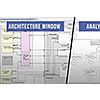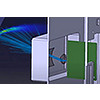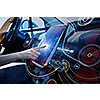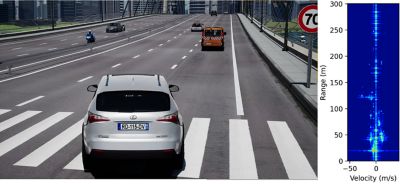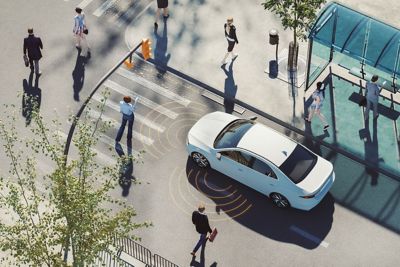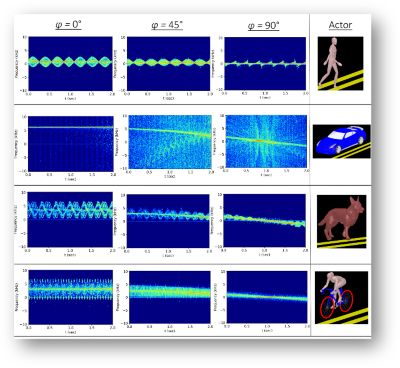기본사양
정확한 실시간 합성 데이터로 센서 인식 테스트 사례와 적용 범위를 향상할 수 있습니다. SiL 또는 HiL 컨텍스트에서 다중 센서 시뮬레이션을 설정하여 모든 작동 조건에서 ADAS/AV 시스템 성능을 보장합니다.
차세대 엔지니어에게 힘을 실어주는 Ansys
학생들은 세계적 수준의 시뮬레이션 소프트웨어를 무료로 이용할 수 있습니다.
미래를 설계하기
시뮬레이션이 다음 혁신을 어떻게 지원할 수 있는지 알아보려면 Ansys와 연결하십시오.
원하는 드라이빙 시뮬레이터를 사용한 사실적인 주행 시나리오
Ansys AVxcelerate Sensors는 센서 인식을 통해 자율 시스템 테스트를 위해 물리적으로 정확한 센서 시뮬레이션을 제공합니다. 카메라, 라이다, 레이더 및 열화상 카메라 센서의 인식 성능을 향상하면서 테스트 시간과 비용을 절약할 수 있습니다. AVxcelerate의 실시간 기능을 활용하여 설계 주기의 진행 상황에 따라 SiL(software-in-the-loop) 또는 HiL(hardware-in-the-loop) 컨텍스트에서 가상 테스트를 수행합니다.
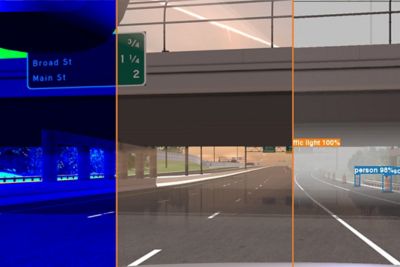
정확한 실시간 합성 데이터로 센서 인식 테스트 사례와 적용 범위를 향상할 수 있습니다. SiL 또는 HiL 컨텍스트에서 다중 센서 시뮬레이션을 설정하여 모든 작동 조건에서 ADAS/AV 시스템 성능을 보장합니다.
2025년 7월
2025 R2 AVxcelerate Sensors 업그레이드는 차세대 카메라, 정확도 향상을 위한 레이더, 실시간 고수준(HiL) 시뮬레이션을 위한 짧은 지연 시간의 RDMA, 사용자 지정 가능한 가시성을 통해 ADAS 및 AV 기술을 강화합니다.
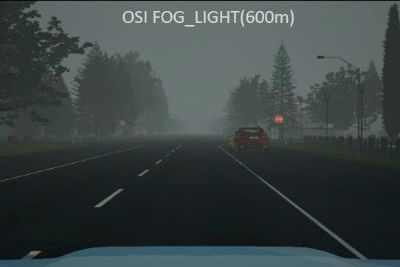
가속화된 이미지 처리 엔진과 CPU로의 직접 DLL 출력은 지연 시간을 줄여 성능을 2.5배 향상하고 8MP 카메라 프레임 시간을 10밀리초 단축합니다. 가시거리는 일광 안개에 맞게 조정되며, 입자(물, 스모그, 먼지)를 정밀하게 정의하여 보다 정확한 환경 테스트를 지원합니다.
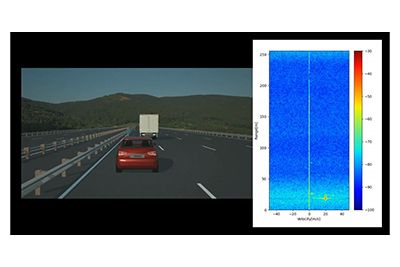
FMCW 레이더용 위상 노이즈 모델은 비선형 노이즈 효과를 도입하여 비현실적인 완벽성을 방지하여 시뮬레이션 정확도를 향상합니다. 이제 AVxcelerate Sensors는 레이더 필터를 시뮬레이션하여 앨리어싱을 방지하고 올바른 주파수 대역폭 내에서 정확한 표적 감지를 보장합니다.
이 데모 영상에서는 자율주행 차량(AV)용 Ansys 솔루션이 함께 작동하여 완벽한 AV 설계 및 시뮬레이션 솔루션을 제공하는 방법을 보여줍니다. 이 솔루션은 라이다 및 센서, 기능적 안전 및 안전에 중요한 임베디드 코드 등을 포함하며, 모두 가상 현실을 통해 시뮬레이션하므로 실제 도로 주행의 테스트 요구 사항을 완화합니다.

"당사의 카메라 센서 기술은 고객을 위한 자율 기능을 지원하는 작업에 매우 중요합니다. ADAS/AD 테스트 및 검증 과정에서 Ansys AVxcelerate Sensors를 사용하여 시뮬레이션을 통해 이전에는 사용할 수 없었던 실제 시나리오를 자신 있게 테스트하여 결과의 정확성을 완전히 확신할 수 있습니다. 균형 잡힌 해결책을 개발하기 위한 작업이 아직 진행 중이며 이들 간의 협력은 계속되고 있습니다. Ansys AVxcelerate Sensors 및 Continental 카메라 센서 솔루션은 이미 유망한 결과를 제공하고 있습니다."
- Martin Punke 박사, Head of Camera Product Technology / Continental
정확한 실시간 합성 데이터로 센서 인식 테스트 사례와 적용 범위를 향상할 수 있습니다. SiL 또는 HiL 컨텍스트에서 다중 센서 시뮬레이션을 설정하여 모든 작동 조건에서 ADAS/AV 시스템 성능을 보장합니다.
첨단 운전자 보조 시스템/자율 주행(ADAS/AD) 기술에서 높은 수준의 정확도를 달성하기 위해 Continental은 시뮬레이션을 위한 카메라 센서를 표적으로 삼았습니다. Continental엔지니어는 테스트 트랙이나 도로에서 실제 주행을 수행하여 ADAS 또는 AD 시스템을 훈련, 테스트 및 검증합니다. 부품 수준의 테스트와 시뮬레이션도 수행하지만 이 문제를 해결하기 위한 엔지니어링 시뮬레이션 솔루션은 제한적입니다. 균형 잡힌 솔루션을 개발하려는 노력은 계속되고 있으며 Ansys AVxcelerate Sensors와 Continental 카메라 센서 솔루션의 협력으로 유망한 결과를 얻고 있습니다.
이 데모 영상에서는 자율주행 차량(AV)용 Ansys 솔루션이 함께 작동하여 완벽한 AV 설계 및 시뮬레이션 솔루션을 제공하는 방법을 보여줍니다. 이 솔루션은 라이다 및 센서, 기능적 안전 및 안전에 중요한 임베디드 코드 등을 포함하며, 모두 가상 현실을 통해 시뮬레이션하므로 실제 도로 주행의 테스트 요구 사항을 완화합니다.
Ansys AVxcelerate는 루프에서 센서 인식을 통해 자율 시스템 테스트를 위해 물리적으로 정확한 센서 시뮬레이션을 제공합니다. 카메라, 라이다, 레이더 및 열전도 센서의 인식 성능을 향상하면서 테스트 시간과 비용을 절약할 수 있습니다.
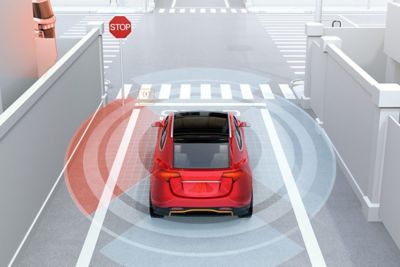
센서 동작을 재현하는 강력한 광선 추적 기능을 활용하고, 전용 인터페이스를 통해 센서 출력을 쉽게 검색할 수 있습니다.
AVXCELERATE SENSOR 자료 및 이벤트

Ansys AV Simulation(AVxcelerate) 2023 R2 릴리스의 새로운 기능과 특징에 대해 알아보려면 참여하십시오. 이번 릴리스에서는 카메라, 열화상 카메라 및 레이더 모델과 시뮬레이션 에코시스템의 개선을 통해 사용자가 보다 정확하고 충실도가 높은 시뮬레이션을 수행할 수 있도록 합니다.
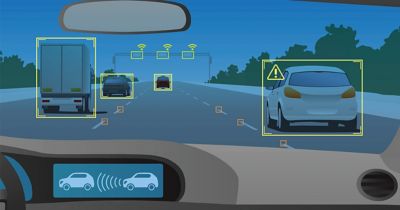
지속 가능한 비즈니스 모델 솔루션을 위해서는 AD 시스템 개발 시 성능과 안전성 간의 철저한 균형이 필요합니다. Ansys 솔루션으로 센서, HMI 개발, 시스템 검증 등의 영역에서 중요한 기술 문제를 어떻게 해결할 수 있는지 알아보십시오.
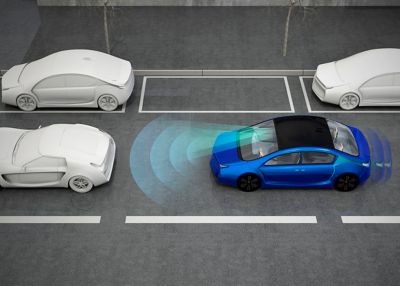
객실 내 감지 시스템 요구 사항은 점점 더 정부 정책과 자동차 안전 평가 기관의 필수 부분이 되고 있습니다. 객실 내 감지 시스템 요구 사항을 알아보고 객실 내 모니터링 시스템 개발과 검증 프로세스에 대한 물리 기반 센서 시뮬레이션을 확인하십시오.
이 데모 영상에서는 자율주행 차량(AV)용 Ansys 솔루션이 함께 작동하여 완벽한 AV 설계 및 시뮬레이션 솔루션을 제공하는 방법을 보여줍니다. 이 솔루션은 라이다 및 센서, 기능적 안전 및 안전에 중요한 임베디드 코드 등을 포함하며, 모두 가상 현실을 통해 시뮬레이션하므로 실제 도로 주행의 테스트 요구 사항을 완화합니다.

Ansys는 모든 사용자가 당사 제품에 액세스할 수 있다는 것을 가장 중요하게 생각합니다. 따라서 US Access Board(508조), Web Content Accessibility Guidelines(WCAG) 및 Voluntary Product Accessibility Template(VPAT)의 현재 형식에 근거한 접근성 요구 사항을 준수하기 위해 노력하고 있습니다.
엔지니어링 과제에 직면하고 있다면우리 팀이 도와드리겠습니다. 풍부한 경험과 혁신에 대한 헌신을 가지고 있는 우리에게 연락해 주십시오. 협력을 통해 엔지니어링 문제를 성장과 성공의 기회로 바꾸십시오. 지금 문의하기
